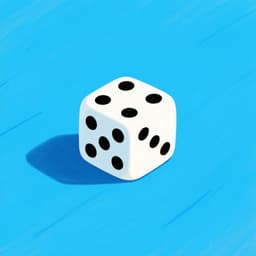De dos, dicen dados.
de DOS, DI-cen DA-dos
They say 'dice' for two.
🔊 Listen & Practice
Start with slow speed to master pronunciation, then gradually increase to challenge yourself.
🎨 Visualization

De dos, dicen dados. Notice how the word for dice ('dados') has two different 'd' sounds!
🎯 Pronunciation Focus
The Soft 'd' Sound
/ð/This is the main challenge. When 'd' comes between two vowels (like in 'dados'), it softens to a sound very similar to the 'th' in the English word 'the'. Let air flow gently over your tongue.
The Hard 'd' Sound
/d/At the beginning of a word ('de', 'dos', 'dicen'), the Spanish 'd' is harder. To make it, touch the tip of your tongue to the back of your top front teeth, not the roof of your mouth like in English.
📝 Practice Breakdown
Start here. All these 'd' sounds are the 'hard' version. Focus on placing your tongue on the back of your teeth.
Here's the tricky part! The first 'd' is hard, but the second 'd' (between the 'a' and 'o') is soft. Make it sound like 'da-tho'.
Key Words in This Tongue Twister:
📚 Background
This is a fantastic first tongue twister for mastering one of the trickiest sounds for English speakers: the two 'd's of Spanish. It's short, simple, and laser-focused on teaching you when to use the 'hard d' versus the 'soft d'.
❌ Common Pitfalls
Using Two Hard 'd's
Mistake: "Pronouncing 'dados' with two identical, hard 'd' sounds, making it sound like the English name 'Dodos'."
Correction: Remember the rule: 'd' between vowels gets soft. The first 'd' is hard, like in 'dog'. The second 'd' is soft, like the 'th' in 'the'. Think: 'DA-tho'.
Incorrect Tongue Placement
Mistake: "Making the 'd' sound with your tongue on the bumpy ridge behind your teeth, like you do in English."
Correction: For a true Spanish 'd', the tip of your tongue needs to touch the back of your upper front teeth. This small shift is key to getting the sound just right for both the hard and soft versions.
🌎 Where It's Used
General Spanish
This is a universal pronunciation drill used across the entire Spanish-speaking world to teach the different 'd' sounds.
🔗 Related Tongue Twisters
The Double 'D' Drill
Say it five times in a row, getting a little faster each time. Your goal is to make the soft 'd' in 'dados' sound different from the hard 'd's every single time.
🏷️ Tags
Frequently Asked Questions
Why does the Spanish 'd' change its sound?
It's all about making the language flow smoothly. Softening the 'd' sound between vowels allows speakers to talk faster without stopping the flow of air. It's a natural shortcut the mouth takes, and mastering it will make you sound much more fluent.
Are there other letters that do this?
Yes! The letters 'b', 'v', and 'g' also have 'hard' and 'soft' pronunciations depending on where they are in a word. Learning the pattern with 'd' is a great first step to understanding this important concept in Spanish pronunciation.



